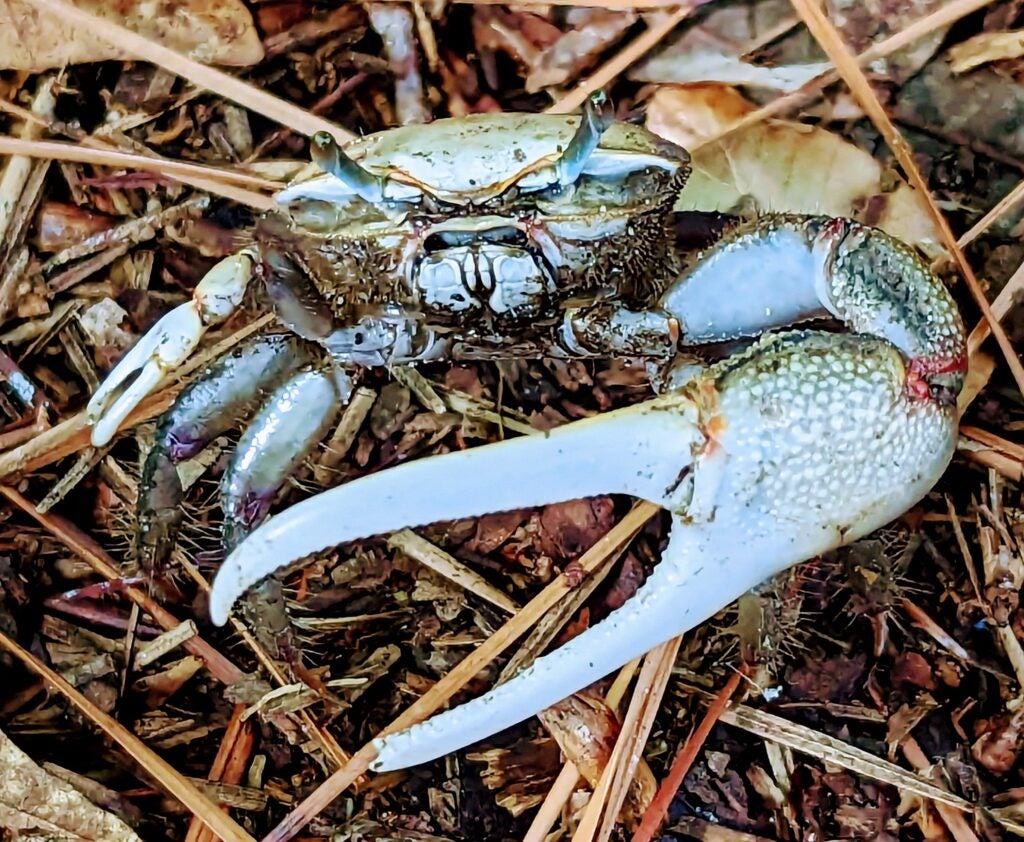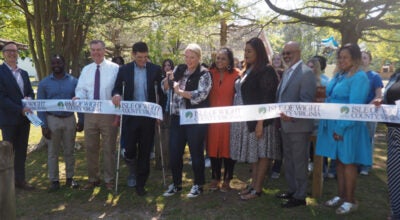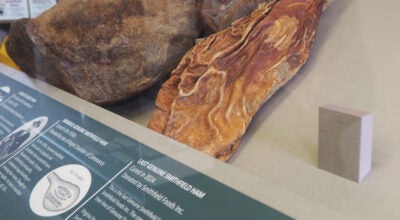‘Ninja crab’ features giant claw
Published 8:24 am Wednesday, November 22, 2023

- This a male Atlantic marsh fiddler crab, which features one large claw used to attract females. (Photo by Linda Byrd-Masters)
By Linda Byrd-Masters
Virginia Master Naturalist HSS
Our home sits on a hill surrounded on two sides by tidal marshland and a small tributary off the Chuckatuck Creek. At the water’s edge in warm weather, hundreds of marsh fiddler crabs move back and forth across the mud bank in a communal ebb and flow.
When my son was about 10, I spotted one skulking beneath the edge of my kitchen cabinet, warily eyeing us up. My son herded him towards the back door, and my intention was to take a dish towel and gently shoo him back outside. However, when the towel brushed across him, he rolled over backward several times and landed upright with his one giant claw squared off at me in a martial arts style and ready to battle.
My son rolled with laughter and we dubbed him “Ninja Crab.”
Interestingly, our little friend could really do no harm with his one, giant outstretched claw (that loosely resembles one playing a fiddle, thus the name).
Only found on male fiddler crabs, they can’t feed themselves, dig or fight off predators with this oversized appendage; these tasks are performed with their one tiny claw. Yet, it is important enough that should it get broken off, the remaining claw will grow larger to replace it. Its main purpose is to attract females by waving it around. If a female responds, the pair will retreat to his burrow where she will produce thousands of eggs. Once incubated, she releases them into the water at high tide, where almost immediately they hatch into tiny larvae that float with tides. After months of floating and molting, they reach adult form and return to land.
The Atlantic marsh fiddler crab is just one of three fiddler crab species found in the Chesapeake Bay region, along with the red-jointed and sand fiddler crabs. They play an important role in maintaining the health of salt marshes. Their burrows in the mud aerate the soil and allow nutrients, including their own biowaste, to reach marsh grass roots which in turn stabilizes and helps expand the marshes that buffer against coastline erosion and flooding.
Each year in late summer and early fall, fiddler crabs appear in our yard away from the mud of the marsh. Just this week, I’ve stepped over two or three lurking in the gap between my house and our deck. Looking into why that is, I’ve learned that they can be a sort of beacon that the yard is destined to become marshland. This seems to be the case, maybe, when September coastal storms push water higher onto our property.
And Ninja Crab? He safely returned outside but to this day, my son (who is now grown) and I enjoy an occasional good laugh and our ninja crab stance together!
Virginia Cooperative Extension programs and employment are open to all, regardless of age, color, disability, gender, gender identity, gender expression, national origin, political affiliation, race, religion, sexual orientation, genetic information, veteran status, or any other basis protected by law. An equal opportunity/affirmative action employer. Issued in furtherance of Cooperative Extension work, Virginia Polytechnic Institute and State University, Virginia State University, and the U.S. Department of Agriculture cooperating. Edwin J. Jones, Director, Virginia Cooperative Extension, Virginia Tech, Blacksburg; M. Ray McKinnie, Administrator, 1890 Extension Program, Virginia State University, Petersburg.





